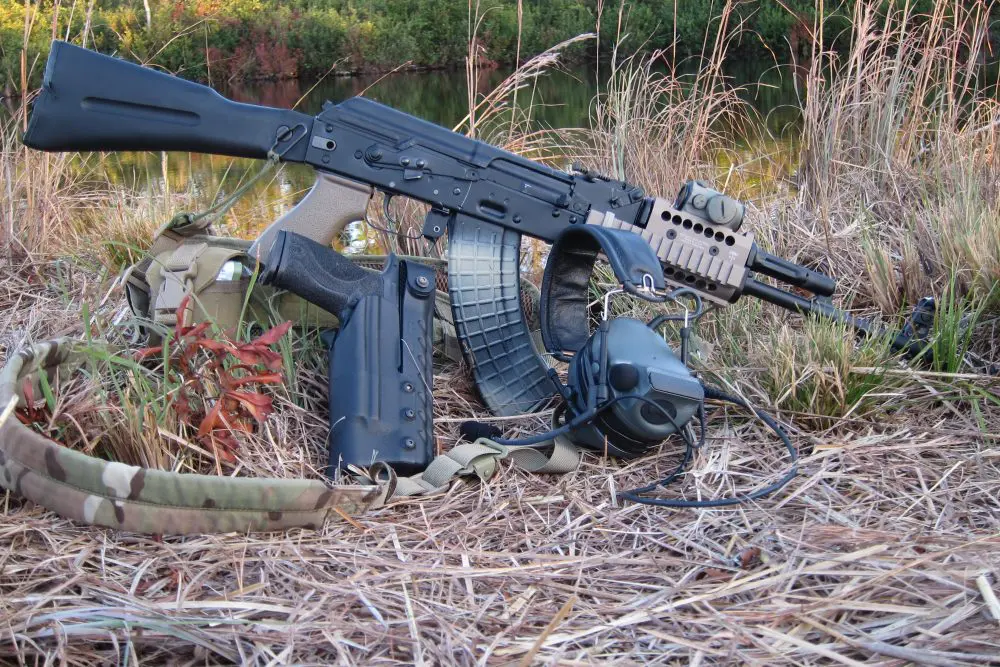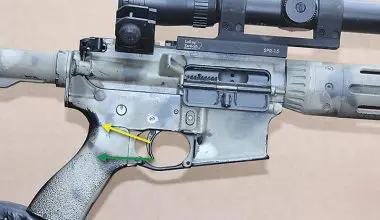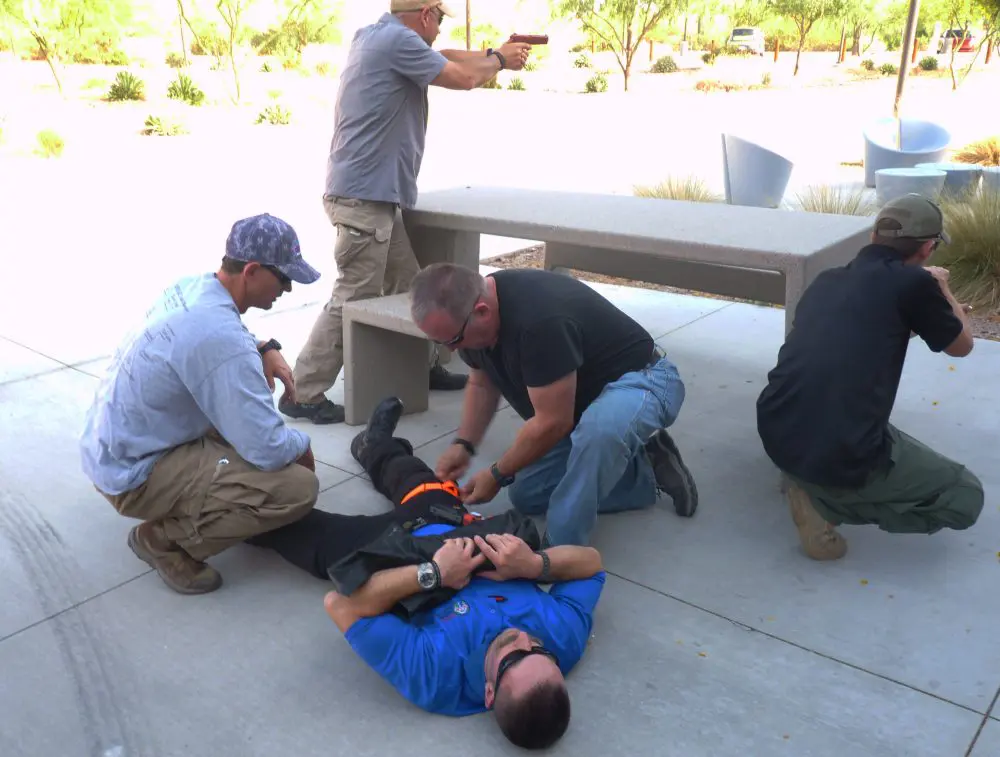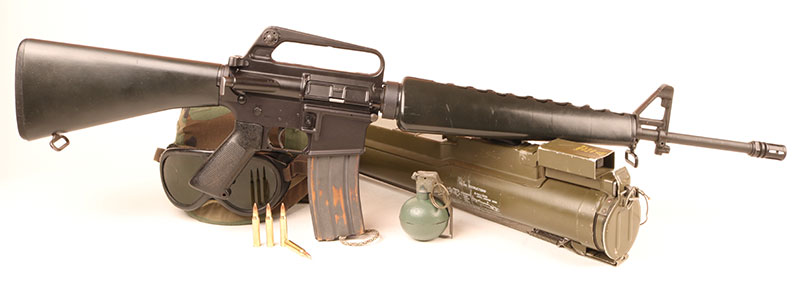
If ever there was a quantum advance in Infantry weapons, it was the M16 rifle. The StG44 and AK-47 were undeniably revolutionary. These two rugged combat weapons ran scaled-down versions of standard rifle rounds that pushed relatively big, heavy bullets to modest velocities. They put automatic-fire capability into the hands of individual Infantry soldiers, while offering an effective range out to 400 meters or so.
But in the M16’s 5.56x45mm cartridge, we find something much more radical.

Those early M16 rifles pushed a tiny .22-caliber 55-grain bullet to about 3,150 feet-per-second (fps). The subsequent instability of these diminutive projectiles in flesh became the stuff of legend. But as with most legends, reality was often something altogether different.
Tiny, fast bullets are unusually susceptible to intervening vegetable matter between the rifle and the target. They can frequently suffer from poor performance under unusual or atypical circumstances. But the resulting recoil impulse was trivial, and the M16 subsequently offered inimitable controllable close-range firepower. In the jungles of Vietnam, American soldiers came to appreciate the manifest strengths and weaknesses of these little rounds and the weapons that fired them.
Table of Contents
WAR STORY 1
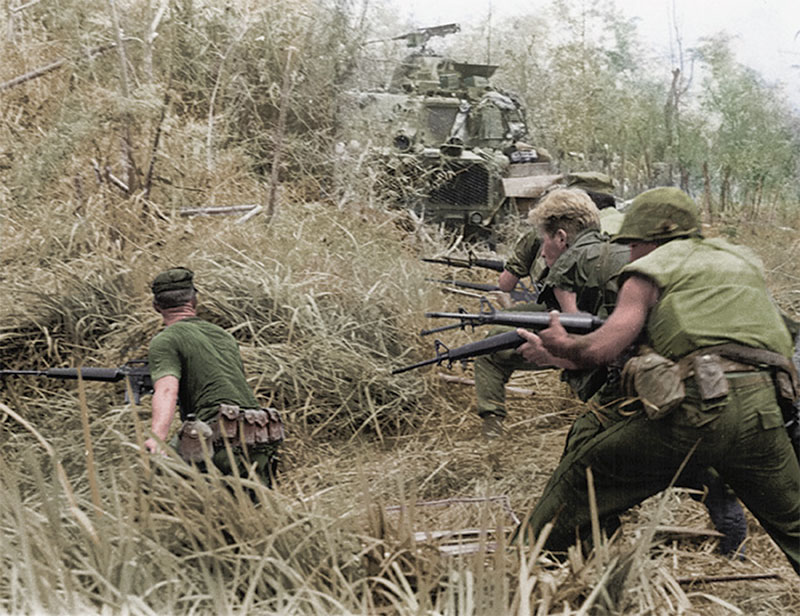
The man was a squad leader in the 101st Airborne on his first of three combat tours in Vietnam. The Viet Cong wanted his firebase in the worst way, and subsequent infiltration attacks in the black of night were the stuff of nightmares. With a chaotic backdrop of automatic weapons fire, claymore mines, hand grenades, and fougasse, the young NCO made his way across the facility, shoring up defenses and distributing ammo.
Fougasse (pronounced foo gas) originated with the British as an expedient defensive tool in the early days of World War II. Building one involves digging a hole and planting a block of explosive underneath a drum of thickened petroleum. The explosive charge was connected to a claymore clacker and served as a remarkably cost-effective solution to night infiltration by the VC.
Making his way through the dark camp by the light of the burning fougasse payloads, the young American Infantry soldier unexpectedly came face to face with a comparably young Viet Cong guerrilla carrying an SKS rifle. For a pregnant moment, both men just froze. In his words, “I was embarrassed. Chuck was embarrassed. It was an awkward moment for us both.”
My friend then responded instinctively and shot the Vietnamese soldier in the chest with a full 18-round burst from his M16A1, killing him instantly. The battle raged on all night long, and the sky troopers of the 101st ultimately held on to their firebase. My buddy won the Bronze Star with V-device for his actions that night. When properly maintained, he had complete faith in the M16 and its small-caliber round.
MEANWHILE, ON THE OTHER SIDE OF THE WORLD …
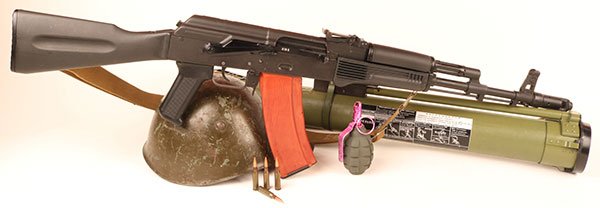
In the aftermath of some well-documented combat failures of the M16 in Vietnam, a vehement movement arose decrying the 5.56mm round as a “poodle popper” inadequately powerful for serious social work. I first discovered my inner gun nerd in the 1970s and recall such stuff as this pervasively in the gun press of the day.
But while the West vacillated over the merits of the small-caliber, high-velocity 5.56mm round, our counterparts on the other side of the Iron Curtain were embarking on their own voyage of discovery.
The origin story of the AK-47 reeks a bit of communist propaganda. The tale was indeed likely flavored somewhat along the way by apparatchiks with an agenda. But the kernel of Mikhail Kalashnikov’s influence is verifiable.
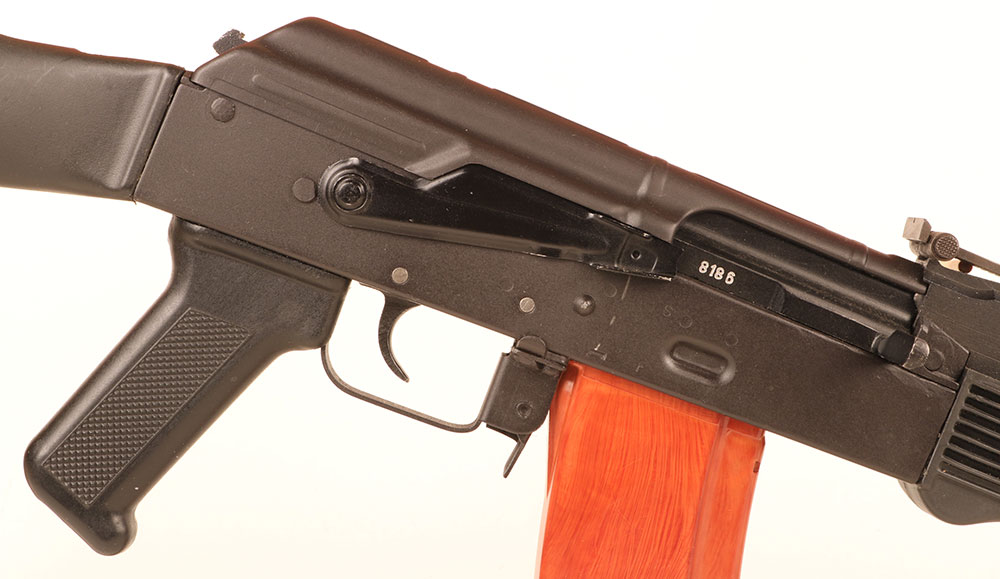
Mikhail Timofeyevich Kalashnikov was the 17th of 19 children born to a peasant family in Kurya, Altai Krai, Russia, in November 1919. Wounded in action as a tank crewman during World War II, the story goes that he dreamt up his eponymous gun while recovering in a hospital. The resulting selective-fire assault rifle did more to foment chaos around the globe than any other single manmade contrivance.
The very first AK rifles employed a stamped receiver that was not acceptably durable. The subsequent milled receiver AK-47 was later redesigned around a proper stamped receiver to become the AKM in 1959. In 1974, Comrade Kalashnikov took this same basic action and adapted it to the radical 5.45x39mm round. The resulting rifle, the AK-74, remains in service with Russian troops today.
The 5.45x39mm is one of my favorite cartridges. Pushing a long, thin, high-velocity 53-grain bullet to about 2,900 fps, this round is as compact and lightweight as the American 5.56mm while offering grossly similar downrange ballistics. However, the standard 7N6 5.45x39mm round produces just over half the recoil energy of the 5.56mm, making it unusually controllable.
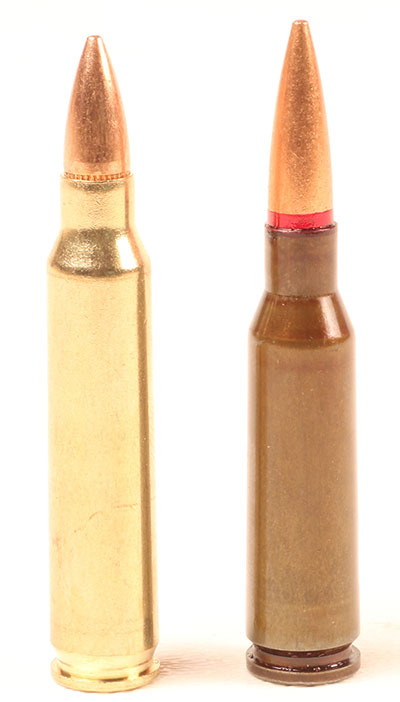
The 7N6 5.45x39mm bullet is a curious design. The jacket is gilding metal pressed around a mild steel penetrator. This penetrator is sheathed in lead, and a small lead plug seals the back of the boat-tail projectile. A small air pocket that was originally attributed to poor quality control remains in the nose of the bullet. We now appreciate that this feature was entirely intentional.
The end result is a long, skinny bullet sporting a center of gravity well to the rear. This inevitably causes the bullet to tumble violently upon impact with a soft, wet target, spilling its energy rapidly and effectively. This radical round saw extensive use after the Soviet invasion of Afghanistan in December 1979.
WAR STORY 2
In January 1987, a group of 39 Soviet paratroops held Hill 3234 in eastern Afghanistan near the Pakistani border. Fanatical Pakistani mujahideen began their assault on the outpost in the middle of the afternoon. The battle was not concluded until late that evening. Hundreds died over the course of the bloody assault.
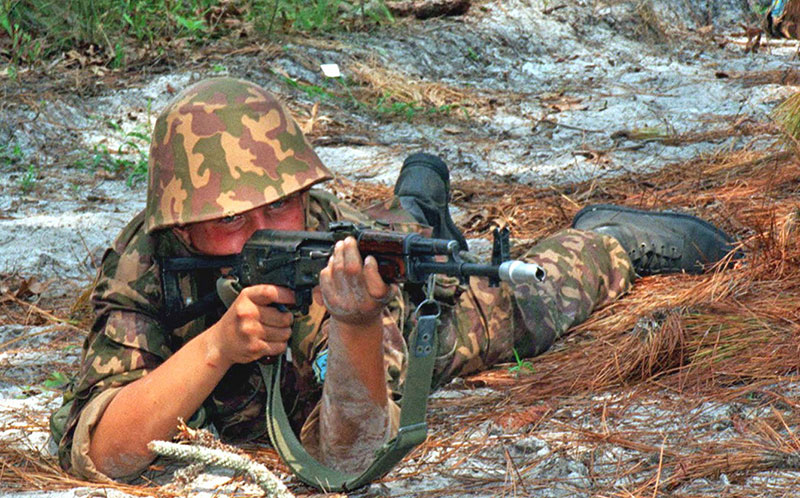
The muj were supported with ample mortar and indirect fire assets that illuminated the strongpoint by the light of explosions once darkness fell. The Pakistani fighters had closed to within 25 meters of the Soviet positions and were pouring withering fire into their emplacements. Soviet artillery spotters called their rounds to within 50 meters of their own positions.
Before the attack was repelled, all but five of the 39 defenders were combat ineffective. The remaining Soviet airborne troops engaged the black-clad jihadists at almost point-blank range, dropping the fanatical attackers with double taps and short bursts from their AK-74 rifles at ranges as close as five meters. When the Russian defenders were out of grenades and down to no more than two magazines of ammunition apiece, they were reinforced with a platoon of scouts that helped turn the tide.
Six of the original Soviet troops on that hilltop died in the fighting. More than 200 mujahideen were killed. The desperate fight retained control of this strategic hilltop and inspired a Russian-language movie titled 9th Company.
The Soviets pulled out of Afghanistan two years later, leaving the battle-scarred country under the control of Muslim radicals. These same jihadists eventually planned and executed the 9/11 attacks on the United States. The military effort to pacify that wretched piece of dirt rages on as I type these words.
TRIGGER TIME
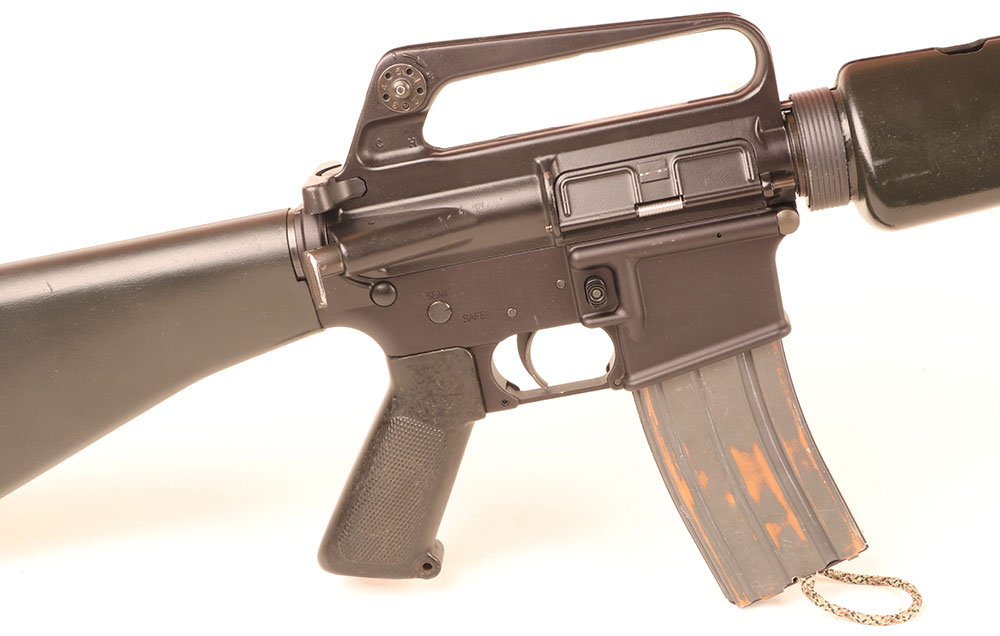
The ergonomics of the M16 set the standard for everything else. The switchology is perfect, and nothing runs faster. Magazines drop away cleanly with a stroke of the catch. It is amazing how lightweight these lithe little guns were in the days before we started hanging so much crap all over them.
No matter how you slice it, the direct gas impingement operating system of the M16 is finicky. I used one operationally for nearly a decade and have experienced every imaginable failure, to include an out-of-battery discharge and subsequent blown case. Even when perfectly maintained, those early magazine followers could tilt at inopportune times and gum up the works. Modern no-tilt followers and other sundry improvements have resulted in a much better rifle.
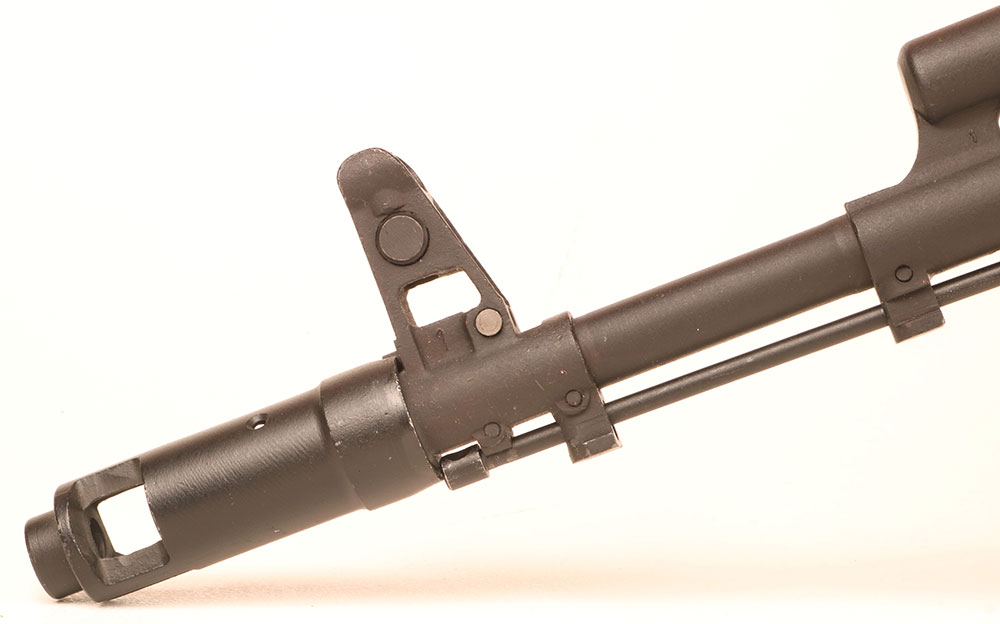
The AK-74 is a lighter and more comfortable rendition of the earlier .30-caliber gun. The muzzle brake directs the muzzle blast to the sides with sufficient ferocity as to clear the sinuses of the poor sots shooting beside you. But the device remains almost unnaturally effective at controlling recoil and muzzle rise. The ranch-gate fire selector sucks, but still works just fine on the 100 million or so copies of the Kalashnikov in service worldwide.
AK magazines have to be rocked into place, but this makes it much easier to seat a full magazine with the bolt closed. As there is no automatic bolt hold open after the last round fired, this becomes a critical attribute. The trigger on the AK-74 is long and creepy but effective. In a stressful environment, it might be argued that this is a good thing. The sliding ramp sight was state of the art in 1945 but seems dated today.

Both rifles are comfortable and pleasant on the range. The limiting factor to my long-range shooting over iron sights these days is my high-mileage eyes rather than some mechanical aspect of the gun. However, during our head-to-head range time together, I found the M16A1 to be markedly more accurate than the AK-74.
Recoil is negligible with each. Both guns are easily controllable on full-auto with appropriate technique. But I do find that the AK-74 seems the more manageable of these two eminently manageable weapons.
DENOUEMENT
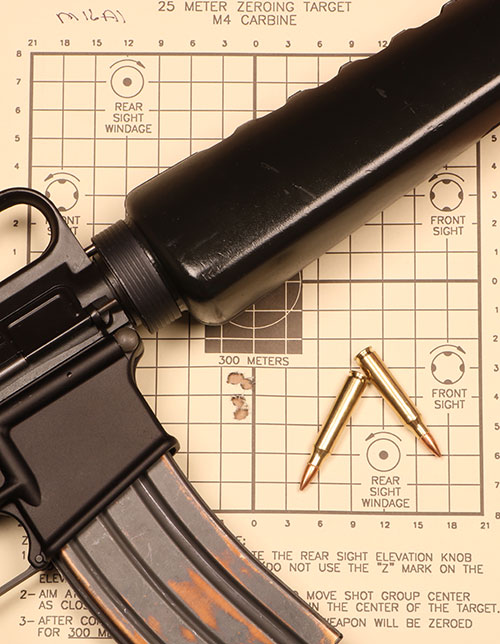
Both these rifles maximize the salient benefits of the small-caliber, high-velocity rounds they fire. The M16A1 is the more ergonomic of the two guns, while the AK-74 is clearly more robust. But I was surprised to find that the American rifle grouped beautifully, while the Romanian AK did not.
It is easy to sit behind a word processor and pontificate about the many benefits of a full-size .30-caliber rifle when compared to its small-caliber competition. However, if you have to move 20 clicks on foot in full battle rattle while carrying a basic load of ammo, every single ounce counts.
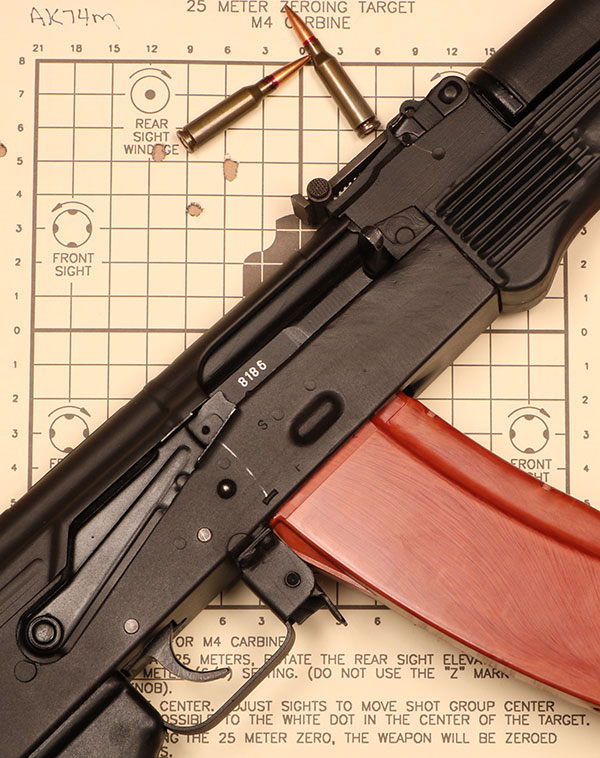
Additionally, everyone I have ever met who ran low on ammo in combat did not care for it much. More bullets for less weight are seldom a bad thing.
Small-caliber Infantry rifles are clearly the international standard worldwide, but it can be thought provoking to follow the parallel development of this concept on both sides of the Iron Curtain. Each rifle has its own definitive personality, and each round is startlingly different. But in the final analysis, both guns are efficient and effective on the modern battlefield.
TECHNICAL SPECIFICATIONS, M16
| CALIBER |
5.56x45mm |
|
WEIGHT |
6.4 pounds |
|
LENGTH |
39.5 inches |
|
BARREL LENGTH |
20 inches |
|
ACTION |
Direct gas impingement |
|
CYCLIC RATE OF FIRE |
700 to 950 rpm |
|
FEED SYSTEM |
20- or 30-round box magazine |
TECHNICAL SPECIFICATIONS, AK-47
| CALIBER |
5.45x39mm |
|
WEIGHT |
7.5 pounds |
|
LENGTH |
37.1 inches |
|
BARREL LENGTH |
16.3 inches |
|
ACTION |
Gas operated |
|
CYCLIC RATE OF FIRE |
600 to 650 rpm |
|
FEED SYSTEM |
30- or 45-round box magazine |
PERFORMANCE SPECIFICATIONS
| WEAPON |
GROUP SIZE |
VELOCITY |
ENERGY |
|
M16A1 |
1.45 |
3,100 |
1,174 |
|
AK-74 |
3.6 |
3,000 |
1,099 |
Group size is best four of five rounds fired from a simple rest at 100 meters. Velocity is average of three rounds fired across a Caldwell Ballistic Chronograph oriented 10 feet from the muzzle.

